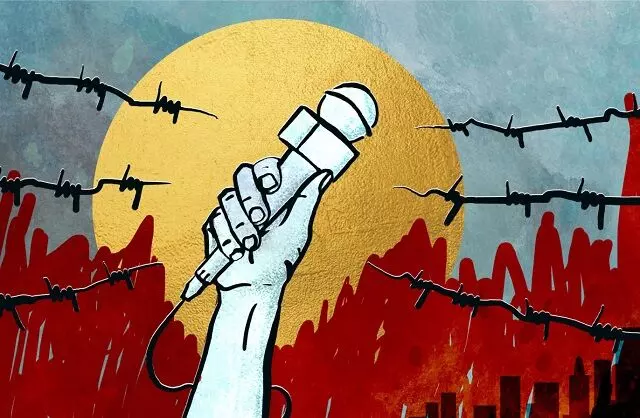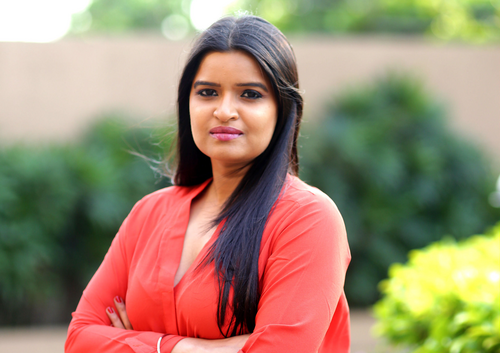Ensure safety of the Fourth Estate
Press safety continues to be an area of concern in India highlighted once again by the unfortunate killing of independent journalist Mukesh Chandrakar

Here’s an untold secret of mainstream journalism — much of the compelling ground reports that shock and awe the audience happen due to the tenacity of local reporters or as they are called, “stringers”. These freelancers are independent journalists who liaison between the behemoth media house reporter and the news story. They have all the insights, tips, leads, as well as knowhow to traverse tricky terrain and unsafe ground. More often than not, it’s these free agents, with a grip over hyperlocal happenings, who actually “break” a story. The credit however, is taken by the media house and its well-paid, swashbuckling journalistic representative. Mukesh Chandrakar, from Bastar, was one such independent journalist; his life tragically cut short while doing his job.
The advent of the digital age came as a boon to journalists such as Mukesh. They could run their own YouTube channels highlighting issues that were of import. In spite of casual dramatics, several of these YouTube news channels feature impactful news stories, many that would never make it to a mainstream news channel. Between advertisements, celebrity anchor-driven shouting fests, and national news, is there ever air-time for issues that affect the common man? As the ever-increasing tussle plays out between editorial and marketing departments for publishing space, independent media has emerged as a breath of fresh air. And while many of these journalists may be missing the finesse of trained professionals, they rarely omit out on journalistic ethics and tenets of reporting.
India has consistently fared poorly on media freedoms and journalist safety indices. As per the 2024 World Press Freedom Index, released by Reporters Without Borders (RSF), India ranks an abysmal 159 out of 180 countries (it has improved its previous year’s score by two ranks). In July 2024, global press body, the International Press Institute (IPI) urged the Indian government to prioritise press freedom and safety. The IPI stated that press freedom had “deteriorated dramatically” in the last decade highlighting the weaponizing of Unlawful Activities Prevention Act (UAPA) and Information Technology (IT) Act to censor and event arrest journalists while also noting the proliferation of newfangled spyware such as “Pegasus” to snoop of journalists. Worryingly, India ranks as the 12th worst nation in the Committee to Protect Journalists’ (CPJ) 2023 impunity index; wherein journalist murders and attacks are mostly likely to go unpunished. CPJ notes that India has been on this list every year since the commencement of the index, along with Somalia, Iraq, Mexico, the Philippines, and Pakistan.
Today, the influencer journalists may be bigger than the story; a fact that violates the traditional precepts of journalism. While they often face vitriolic attacks via online trolls and rampant threats, we hear little about the abuse faced by reporters in tier II and III India and hear most about their deaths; in many senses, they never get a second chance or live to tell their tale. Mukesh, for instance, was found dead in a septic tank for reporting about alleged corruption involving a road construction project. That’s how dangerous life can be for reporters in small town India. These independent journalists may not get the coveted journalistic awards, but in my opinion, they are most deserving for their relentless reporting on topics that don’t rake in TRPs (Television Rating Points). The digital age has been a double-edged sword — while it has democratised the broadcast of news ensuring that more people watched real stories, it has also heightened the lack of safety of independent journalists, who now thanks to the expansive reach of digital platforms are able to make a greater dent.
Of course, we know that law and order is a state subject. And obviously, when people like Mukesh are mercilessly killed, it’s for the state government of the day (in this case the Chhattisgarh government) to intervene and allay fears. As per fellow journalists, Mukesh had been receiving threats and criticisms from various factions including administrative officers, and just a few months later, he is no more. The ugly reality is that Mukesh is not the first one and he won’t be the last. There have been numerous instances of independent journalists reporting from our Indian districts who have paid for their courageous journalism with their lives. We need better protection of the Fourth Estate and especially those who operate in the far-flung territories of India. As a former journalist, when I look back at my reporting assignments in tier II and III India, I am filled with both wonder and gratitude. Even on those brief reporting jaunts, one could feel an air of unsafety and uncertainty — and that was just for a few days on the field; while the undaunted independent journalists spend lifetimes reporting on contentious subjects without the protection of influential media houses and even the law. From the outskirts of Haryana, to deep inside Rajasthan’s Dausa, to Telangana’s Karimnagar (erstwhile in Andhra Pradesh) — I remember this unshakeable feeling of being vulnerable. And always, always, there was someone like a Mukesh, helpful and resourceful, assuaging our minds to tide over the uneasiness.
The writer is an author and media entrepreneur. Views expressed are personal



